Mastering Red Wine Stain Removal Techniques
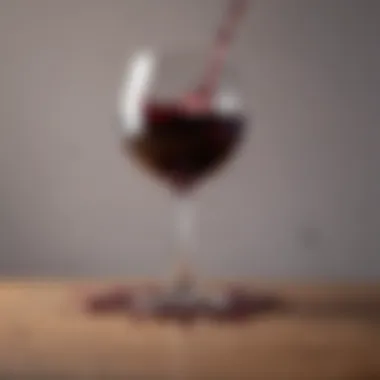
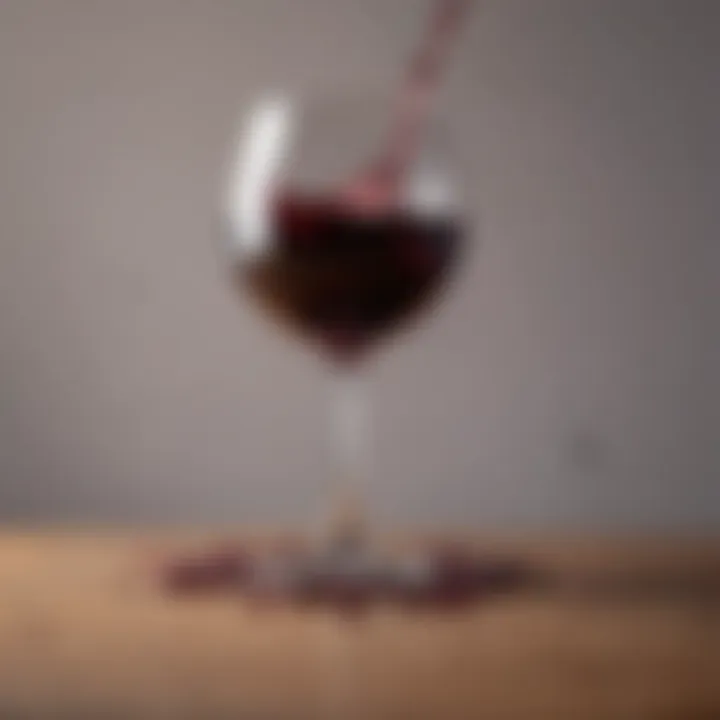
Intro
Red wine stains present a persistent challenge in households, often leading to frustration and despair. Their vivid hues can quickly mar fabrics, carpets, and other surfaces. In this guide, we delve into the effective techniques for removing these infamous stains. Understanding the chemistry behind the stain removal process is essential to achieving successful results.
This article aims to inform readers about practical methods and tools necessary for tackling red wine stains. From immediate responses to long-term care, you will gain insights that promote a clean and aesthetically pleasing living environment. By the end, you should feel confident in addressing any red wine mishap, which is crucial for homeowners, party hosts, and anyone who enjoys a good glass of red.
Your ability to act swiftly and accurately can determine the outcome of your cleaning efforts. We will explore traditional and modern techniques, each with its unique advantages and specific use cases.
Preface to Red Wine Stains
Dealing with red wine stains is an unpleasant reality for many homeowners and hosts. This section serves as a crucial starting point for understanding why addressing red wine stains efficiently is essential. The inevitable spillage of red wine can turn a beautiful evening into a daunting cleanup task. Not only do these stains pose an aesthetic challenge, but they also threaten to damage your favorite fabrics and surfaces.
Understanding the nature of red wine stains equips individuals with the knowledge to tackle them more effectively. Reactions between the tannins in wine and the fibers of fabrics can create lasting marks if not treated promptly. Moreover, being aware of common scenarios leading to stains allows individuals to brace themselves better for potential mishaps in settings such as dinner parties, family gatherings, or simply enjoying a glass at home.
This introduction emphasizes the importance of being prepared and informed when it comes to red wine stains. Efficient stain removal can save both your possessions and peace of mind.
Understanding the Nature of Red Wine
Red wine is rich in color and flavor, but it comes with a complex chemistry that can lead to stubborn stains. The primary components contributing to stains are tannins, pigments, and acids. Tannins are polyphenols that affect flavor and mouthfeel, while pigments, known as anthocyanins, are responsible for the deep hues of red wine. These elements bond with fabric fibers, making removal challenging if the stain is not treated quickly. Often, lighter fabrics like cotton or silk absorb these components more readily, leading to more pronounced stains.
When red wine spills, it creates a potential permanent mark on materials, altering their appearance over time. Understanding this helps people to appreciate the urgency of stain treatment. Utilizing the correct techniques not only prevents permanent damage but also maintains the integrity of the fabric, which is of great importance in households with fine decor.
Common Scenarios Leading to Stains
Red wine stains most frequently occur in social settings where wine is served. Common scenarios include:
- Dinners and Celebrations: Gatherings where wine is served can lead to accidental spills, especially when guests are animated.
- Outdoor Events: Whether at a picnic or garden party, uneven surfaces can increase the likelihood of accidents.
- Home Relaxation: Casual evenings at home can lead to unexpected spills, particularly if wine glasses are placed on soft furnishings.
- Transportation: Moving glasses from one place to another, especially in crowded areas, can result in clumsiness.
Anticipating these occurrences is the first step in effective stain management. By understanding the environments that lead to red wine stains, individuals can take preemptive measures, ensuring that they are well-equipped to act quickly as spills happen.
Immediate Actions After Spillage
The urgency post-spillage cannot be overstated. Correct and immediate actions significantly influence the success of stain removal. Wines contain pigments and tannins that can quickly set in fabrics, leading to harsher clean-up efforts later. Furthermore, the earlier you intervene, the higher the likelihood of prevention against lasting damage.
Assessing the Stain Severity
Before attempting to tackle the stain, evaluate its severity. The following points are essential for accurate assessment:
- Type of Fabric: Different fabrics react variably to stains. A linen may absorb red wine differently than silk.
- Time Elapsed: If the spill is fresh, the stain is more treatable; older stains generally stick harder.
- Amount of Wine: A larger amount can mean deeper penetration into the fabric fibers.
Once you comprehend these elements, you can better decide how to proceed. Quick thinking in this phase can save time and effort down the line.
Immediate Techniques to Mitigate Damage
Once you assess the stain, take action right away. The following techniques are crucial for effective initial response:
- Blot, Don’t Rub: Use a clean cloth or paper towel to blot the stain gently. Rubbing may push the wine deeper into the fabric, complicating later removal.
- Cold Water Rinse: Rinsing the stained area with cold water can help dilute the wine, lifting some of the stain. Use a gentle stream or a spray bottle for accuracy.
- Salt Application: For immediate absorption, pour salt onto the stain. The salt absorbs the red wine and reduces the stain's intensity.
- Club Soda Treatment: If accessible, pour club soda over the stained area. The carbonation can help lift the wine, aiding in its removal.
Remember: The primary aim is to contain the stain and prevent it from setting further.
Successfully executing these immediate actions sets the stage for more thorough treatment later on, maintaining the integrity of your fabric, and ultimately extending the lifespan of your possessions.
Materials Required for Stain Removal
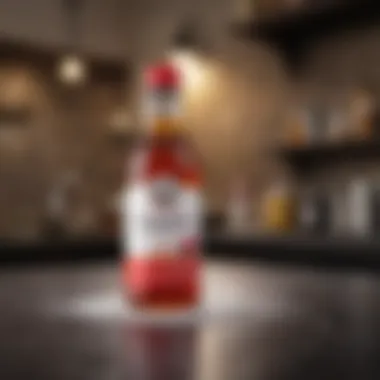
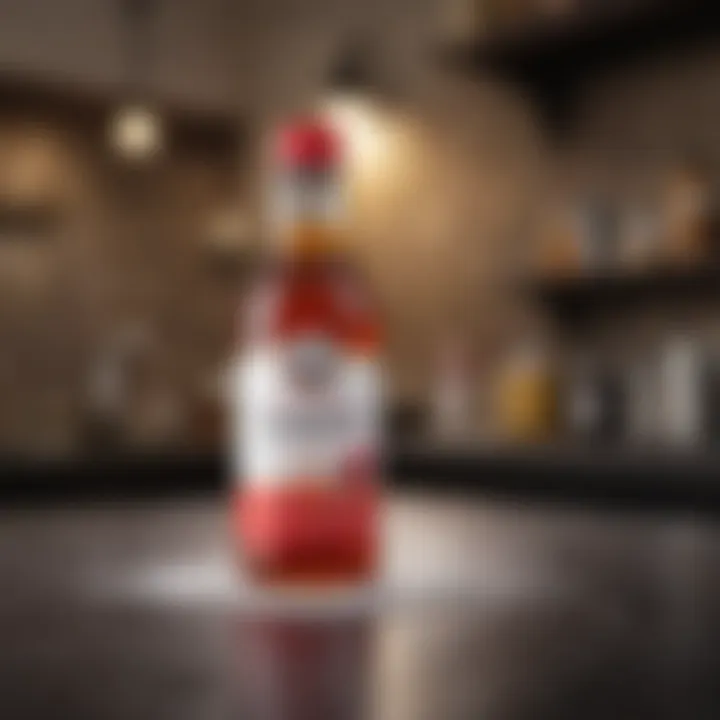
Understanding the materials needed for removing red wine stains is crucial for effective results. This section outlines both common household items and commercial stain removers you might consider using. Knowing what works best will save time and maintain the integrity of various fabrics and surfaces.
Using the right tools can not only enhance your cleaning efficiency but also minimize the risk of further damage to your belongings. Some materials are safer for delicate fabrics, while others can tackle tougher stains with stronger chemicals. Balancing efficacy with safety is key.
Household Items That Aid in Stain Removal
Many homeowners may not realize that simple household items can be powerful allies in the fight against red wine stains. Here are some effective options:
- Salt: Acts quickly to absorb the liquid. It's ideal for fresh spills, drawing out moisture from fabrics.
- Baking Soda: Known for its absorbent properties, it can help lift stains when combined with water to form a paste.
- White Vinegar: A mild acid that can break down the components of the stain. It’s often mixed with dish soap for enhanced effectiveness.
- Club Soda: Works by carbonic acid to lift the stain particles away from the fabric. It’s best used immediately after the stain occurs.
- Dish Soap: Typically gentle on fabrics, mixed with vinegar or baking soda, it helps to clean and lift stains effectively.
- Hydrogen Peroxide: A stronger option for tougher stains, suitable for white fabrics but should be tested carefully on colored items.
These items are not only easily accessible but also environmentally friendly choices. They provide a non-toxic alternative to chemical cleaners, aligning with considerations for both health and sustainability.
Commercial Stain Removers
While household items can be effective, sometimes more aggressive stains call for specialized commercial stain removers. Understanding various products will help you choose wisely. Here are some options:
- OxiClean MaxForce: Known for its multiple-enzyme formula, this product can tackle a range of stains, including those from red wine.
- Zout Laundry Stain Remover: This spray is effective for treating fresh spills and has been shown to work well on protein stains as well.
- Wine Away: Specifically designed for red wine stains, this product is popular for its fast-acting formula.
- Shout Advanced Gel: Comes in gel form, making it easier to apply to specific areas, particularly useful for vertical surfaces.
- The Laundress Stain Solution: Although pricier, this brand is established in the market for quality stain removal products.
When selecting a commercial stain remover, consider the type of fabric you are dealing with and any specific cleaning recommendations from the manufacturer. Always follow the instructions to avoid damage to your materials.
It is vital to test any stain remover, whether household or commercial, on a hidden area of the fabric before full application. This step can help prevent any adverse reactions.
Techniques for Removing Red Wine Stains
Red wine stains can be a source of frustration for anyone who enjoys hosting gatherings or simply indulging in a glass of wine. Understanding effective techniques for stain removal is essential. Not only does it minimize the damage to valuable fabrics, but it also preserves the aesthetic appeal of your home. The methods discussed here showcase affordability and accessibility, making them practical for anyone facing this common issue.
Salt and Baking Soda Method
The salt and baking soda method is popular for its simplicity and effectiveness. Salt acts as an absorbent, soaking up excess wine from fabric. Baking soda, a mild abrasive, can help lift the residue. To apply this technique, follow these steps:
- Dab the stain with a clean cloth to absorb as much wine as possible.
- Sprinkle salt generously over the stain.
- Let it sit for a few minutes.
- Rinse with cold water.
- If the stain persists, make a paste with baking soda and a little water and apply it to the area, then rub gently.
- Rinse again with cold water.
This method is quite useful for cotton and some blends, but it is essential to test on an inconspicuous area first to avoid discoloration.
Vinegar and Dish Soap Technique
This technique employs the natural cleaning properties of vinegar and the grease-cutting abilities of dish soap. Together, they can effectively break down the compounds in red wine. Here’s how to utilize this method:
- Mix one part white vinegar, one part dish soap, and two parts warm water in a bowl.
- Gently stir the mixture to combine.
- Use a clean cloth to apply the solution to the stain, blotting rather than rubbing.
- Allow it to sit for about 15 minutes, then rinse with cold water.
This method is suitable for most fabric types, but as with any cleaning method, testing beforehand is advisable.
Club Soda Approach
Club soda is another handy substance for stain removal. The carbonation can help lift the stain while the salt can absorb the liquid. To use club soda:
- Blot out as much of the wine as possible with a clean cloth.
- Pour a small amount of club soda directly over the stain.
- Allow it to fizz for a moment before blotting with a cloth.
- Repeat as necessary until the stain diminishes.
Avoid rubbing the fabric to prevent spreading the stain further. This approach is particularly effective on carpets and upholstery due to the bubbling action.
Commercial Products: Evaluating Efficacy
Commercial stain removers are available and often marketed specifically for red wine stains. When considering these products, it’s crucial to evaluate their ingredients and application instructions. Look for items that promise to address protein-based stains, and follow the directions closely for best results. Here are some tips for selecting effective products:
- Check reviews from verified users to gauge performance.
- Choose products with oxygen bleach, which can be more effective than chlorine bleach on stain removal.
- Always conduct a patch test on a small area before full application.


Some notable products include Wine Away and OxiClean MaxForce. However, always read labels and ensure they are suitable for the specific fabric you are treating.
Stain Removal for Specific Fabrics
When tackling red wine stains, it is crucial to recognize that different fabrics respond uniquely to various cleaning techniques. The type of fabric influences both the removal approach and the potential for damage. For homeowners and enthusiasts, understanding this can lead to better decisions in maintaining the integrity of their possessions.
Each fabric has specific characteristics that dictate how it interacts with stains and cleaning agents. For instance, cotton is generally durable and can withstand harsher treatment, while silk requires gentler methods to prevent damage. Being aware of these differences allows individuals to approach stain removal with greater confidence and effectiveness.
Removing Stains from Cotton
Cotton fabrics are among the most common in households, making stain removal techniques for this material critically important. Cotton is absorbent, which means it can quickly soak up red wine. Quick action is necessary to prevent permanent staining.
To begin the removal process, gently blot the stained area with a clean cloth or paper towel. Avoid rubbing, as this can spread the stain. After blotting, apply a mixture of cold water and mild detergent directly to the stain. This can help lift the wine without damaging the fabric. Rinse the area frequently with cold water until the stain fades. If needed, repeat this process a few times.
Remember: Always test any cleaning solution on an inconspicuous area of the fabric first to avoid discoloration.
Dealing with Silk Fabrics
Silk, while elegant, is delicate and can be easily damaged by improper cleaning methods. In many cases, it is advisable to seek professional cleaning. However, in situations where immediate action is necessary, several techniques can be employed with caution.
Start by gently blotting the stain with a soft cloth to absorb excess wine. To create a cleaning solution, mix equal parts of white vinegar and water. Using another clean cloth, apply this solution directly onto the stain, working from the outer edge toward the center to prevent spreading. Rinse with cold water and refrain from wringing the fabric. Instead, allow it to air dry flat. This method can help lift the stain while being gentler on the fibers.
Techniques for Synthetic Materials
Synthetic fabrics, such as polyester or nylon, are often more resistant to stains than natural fibers. This characteristic allows for more aggressive cleaning methods. However, care should still be taken to avoid damage.
Using a solution of dish soap and water, apply it directly to the stained area. Gently scrub with a soft brush or cloth. Synthetic materials can usually withstand more pressure than delicate fabrics. After scrubbing, rinse the area thoroughly with cold water and repeat as necessary. For tougher stains, consider using a commercial stain remover designed specifically for synthetic fabrics, following the manufacturer's guidelines carefully.
Handling Upholstery and Carpets
Stains on upholstery or carpets can be particularly challenging due to the absorbent nature of these materials. Quick action is critical.
First, blot the stain with a clean cloth to absorb as much wine as possible. Next, create a cleaning solution using mild detergent and water. With a sponge, apply the solution to the stained area and gently blot. Avoid soaking the fabric, as excess moisture can lead to mold and mildew. Rinse thoroughly with clean water and blot dry. In some cases, it might be necessary to rent a professional carpet cleaner for extensive stains.
In summary, understanding how to handle red wine stains on different fabrics will not only help restore the appearance of items but also prolong their life. Each fabric requires a tailored approach, so knowing the specifics is essential for effective stain removal.
Precautions When Removing Stains
When addressing red wine stains, precautions are key to prevent further damage to fabrics and surfaces. Not all cleaning methods are suitable for every type of material. Understanding the specific properties of the fabric being treated will ensure effective and safe cleaning.
Benefits of Precautions
Taking care in the stain removal process can prevent issues such as color fading or fabric weakening. It is easier to aim for successful removal when you understand the item you are treating.
Considerations that should be made include:
- The type of fabric or surface affected
- The age and condition of the item
- Any previous cleaning methods used on the fabric
By being aware of these factors, the risk of harming the item is minimized. Doing it right the first time saves time and costs in the long run.
Testing Products on Inconspicuous Areas
Before applying any stain removal method broadly, it is advisable to test the cleaning product on a hidden area of the fabric. This ensures that there will be no adverse reactions such as discoloration or degradation of fibers.
Steps to Conduct a Test:
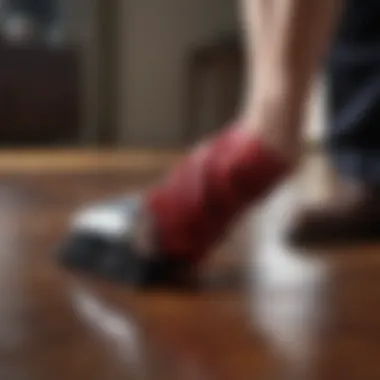
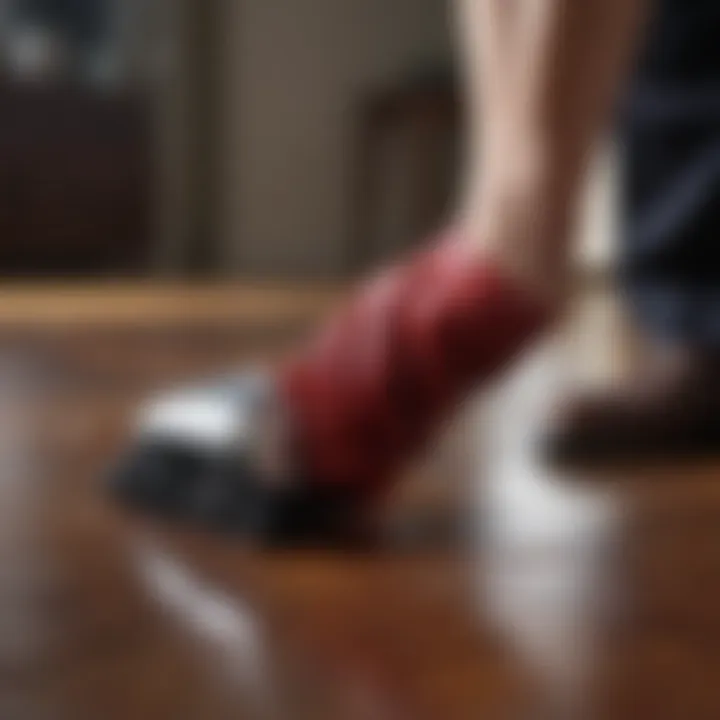
- Choose a small and less visible section of the material.
- Apply a small amount of the cleaning solution.
- Wait for a few minutes to observe any reaction.
- Rinse and dry the area to see if any damage occurred.
This simple test can save you from potential mishaps, ensuring your efforts are effective and safe.
Avoiding Certain Common Mistakes
In the quest to remove red wine stains, people often make mistakes that may worsen the situation. Awareness of these pitfalls is crucial.
Common Mistakes to Avoid:
- Rubbing too hard: This can push the stain deeper into the fabric. Instead, gently blot the stain.
- Using hot water: It can set the stain, making it harder to remove. Stick to cold water until the stain is lifted.
- Ignoring fabric care labels: Different materials have specific care instructions. Always reference them before using a product.
- Waiting too long: Stains are easier to remove when fresh. Take action as soon as possible.
Proper precautions and being mindful of these common mistakes could significantly increase the likelihood of successful stain removal.
By implementing these precautions, the process of tackling red wine stains becomes more efficient. You can maintain the integrity of your valued fabrics and surfaces while restoring their original condition.
Long-Term Care and Prevention
Long-term care and prevention of red wine stains are vital aspects of maintaining the integrity and appearance of your belongings. It is not only about responding to stains after they occur; proactive measures can significantly reduce the likelihood of damage in the first place. Understanding the nature of fabrics and surfaces, along with the appropriate protective treatments, enhances the longevity of items and minimizes the stress associated with unexpected spills.
When you incorporate preventive strategies, you help to safeguard your fabrics against potential staining. Such strategies can also make future cleaning efforts less labor-intensive and preserve the aesthetic appeal of your items over time. This approach is particularly beneficial for high-use areas, such as dining rooms and lounges, where social gatherings frequently occur.
Furthermore, educating yourself on the best practices while serving red wine can complement these protective measures effectively. Knowing how to mitigate risks during social events brings peace of mind and enhances the enjoyment of entertaining.
Protective Treatments for Fabrics
Applying protective treatments to your fabrics is an excellent approach to minimizing red wine stains. Many fabric protectors are available on the market, designed to repel liquid and resist staining. When you treat fabric items such as upholstery or table linens, they become less prone to absorb spills.
Here are some options:
- Water-based fabric protectors: These create a barrier against moisture but allow the fabric to breathe.
- Silicone-based protectors: These offer longer-lasting protection but might affect the fabric's feel and appearance.
- DIY solutions: Solutions like vinegar and water can create a non-toxic protective layer, albeit with less efficacy than commercial products.
Before applying any treatment, always test the product on a small, inconspicuous area to ensure it doesn't alter the fabric's color or texture. If you find your fabric has already been treated, verify the compatibility of additional products with the existing treatment, to avoid damaging the fabric.
Best Practices for Serving Red Wine
To further prevent red wine stains, it is essential to employ best practices during service. Here are several recommended strategies:
- Use appropriate glassware: When serving red wine, opt for glasses with a wider bowl. This not only enhances the wine's flavor but reduces the chance of spills.
- Keep cloths handy: Have a few absorbent cloths nearby for quick response if any spills occur. Cotton or microfiber cloths work best.
- Control pour sizes: Encourage smaller pours to limit the risk of accidental spills.
- Strategic placement: Set up serving areas and dining tables away from high-traffic zones, minimizing the potential for mishaps.
"Prevention is more effective than cure," is especially true for wine stains. Implementing these practices allows for a more enjoyable and stress-free social experience.
By applying protective measures and adhering to thoughtful serving protocols, you can significantly diminish the chances of encountering troublesome red wine stains. Long-term care will not only keep your fabrics looking great but also save you effort when stains do occur.
Culmination
In this section, it is crucial to reflect on the effective techniques discussed throughout this article. The removal of red wine stains is not just a matter of aesthetics; it has broader implications for maintaining the condition of various fabrics and surfaces. Throughout the article, we have examined both immediate and long-term strategies for tackling these often stubborn stains. Each technique has its unique advantages and practicality, depending on the nature of the stain and the material involved.
Recapping Effective Techniques
We have identified several methods for removing red wine stains, including:
- Salt and Baking Soda Method: This utilizes the absorption properties of salt and baking soda, helping to lift the stain from fabrics effectively.
- Vinegar and Dish Soap Technique: The combination of vinegar and dish soap can break down the tannins found in red wine, making the stain easier to remove.
- Club Soda Approach: The carbonation in club soda can help lift the stain, making it a popular choice for immediate action.
- Commercial Products: Various stain removers can also be effective, but one must evaluate their suitability for specific fabrics.
It is essential to choose the method that aligns with the type of material and the severity of the stain. Recalling these techniques will empower homeowners and hosts to address spills effectively, preserving their belongings.
Final Thoughts on Maintaining a Stain-Free Environment
Maintaining a stain-free environment is an ongoing effort. By integrating protective treatments for fabrics and adopting best practices when serving red wine, individuals can minimize the risk of accidents significantly. Regular maintenance and proper care of upholstered surfaces and carpets can prevent deep stains from setting in. As a takeaway, setting up an immediate cleanup plan and being prepared with the right materials beforehand can lead to successful stain removal.
Remember that a proactive approach not only enhances the longevity of fabrics but also contributes to a visually appealing home. By being equipped with knowledge and techniques, homeowners can ensure a comfortable and aesthetically pleasing living space.



